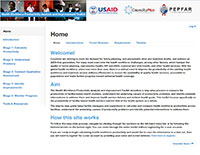 The health workforce is critical for ensuring access to high-quality family planning/reproductive health, maternal and child health, HIV/AIDS, and other services in order to improve health outcomes. While increasing the number of health workers where there are shortages is essential, it is equally important to improve the productivity of the existing workforce and make service delivery more efficient. The Health Workforce Productivity Analysis and Improvement Toolkit describes a step-wise process to measure the productivity of facility-based health workers, understand the underlying causes of productivity problems, and identify potential interventions to address them. Users can enter and save facility-level data on service delivery outputs and human resources costs in order to calculate total health workforce productivity and compare these rates across facilities. This process differentiates higher-productivity facilities from lower-productivity ones, which through a qualitative assessment can help managers and supervisors to consider which factors are affecting health workforce productivity in the facilities.
The health workforce is critical for ensuring access to high-quality family planning/reproductive health, maternal and child health, HIV/AIDS, and other services in order to improve health outcomes. While increasing the number of health workers where there are shortages is essential, it is equally important to improve the productivity of the existing workforce and make service delivery more efficient. The Health Workforce Productivity Analysis and Improvement Toolkit describes a step-wise process to measure the productivity of facility-based health workers, understand the underlying causes of productivity problems, and identify potential interventions to address them. Users can enter and save facility-level data on service delivery outputs and human resources costs in order to calculate total health workforce productivity and compare these rates across facilities. This process differentiates higher-productivity facilities from lower-productivity ones, which through a qualitative assessment can help managers and supervisors to consider which factors are affecting health workforce productivity in the facilities.
